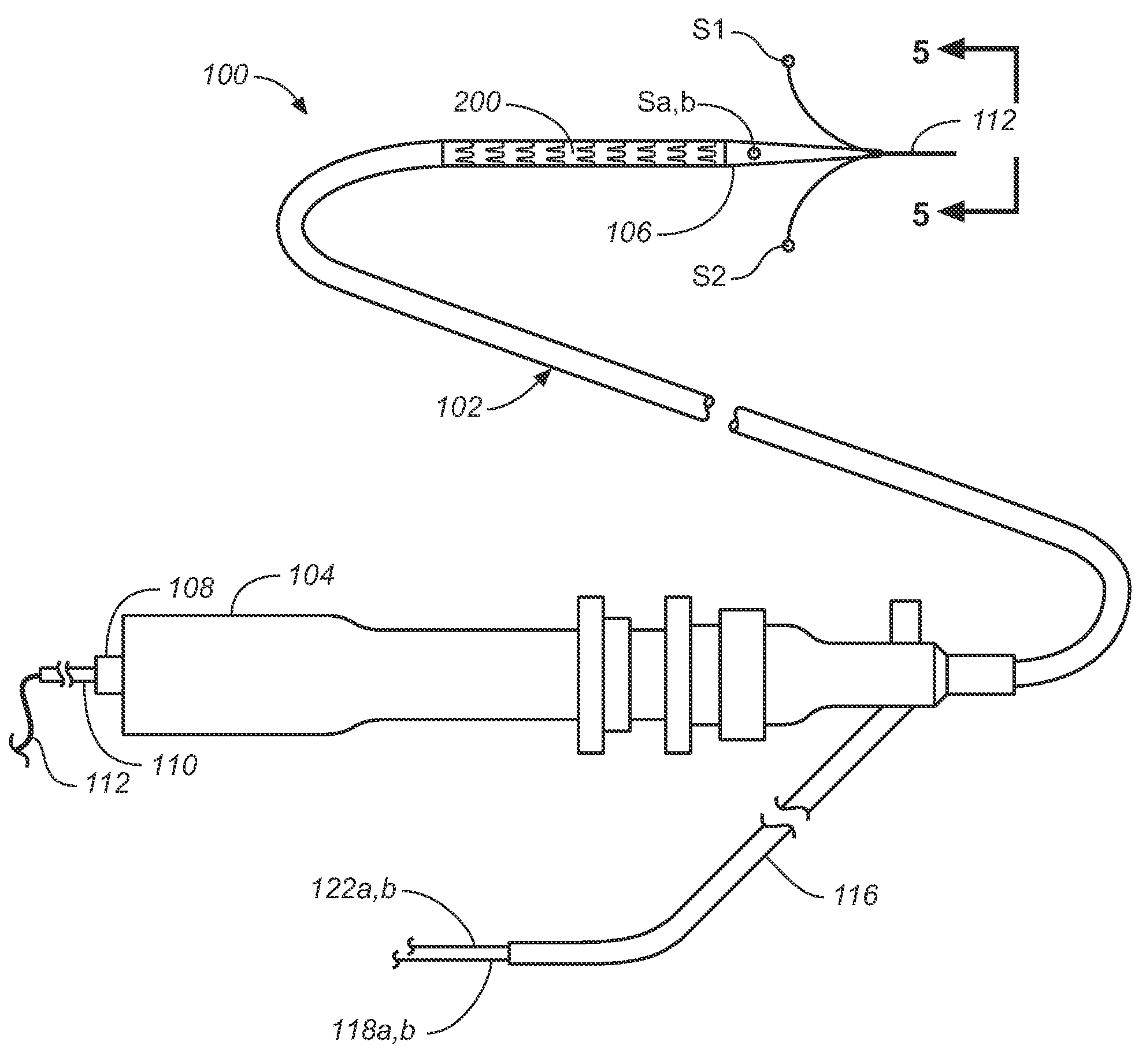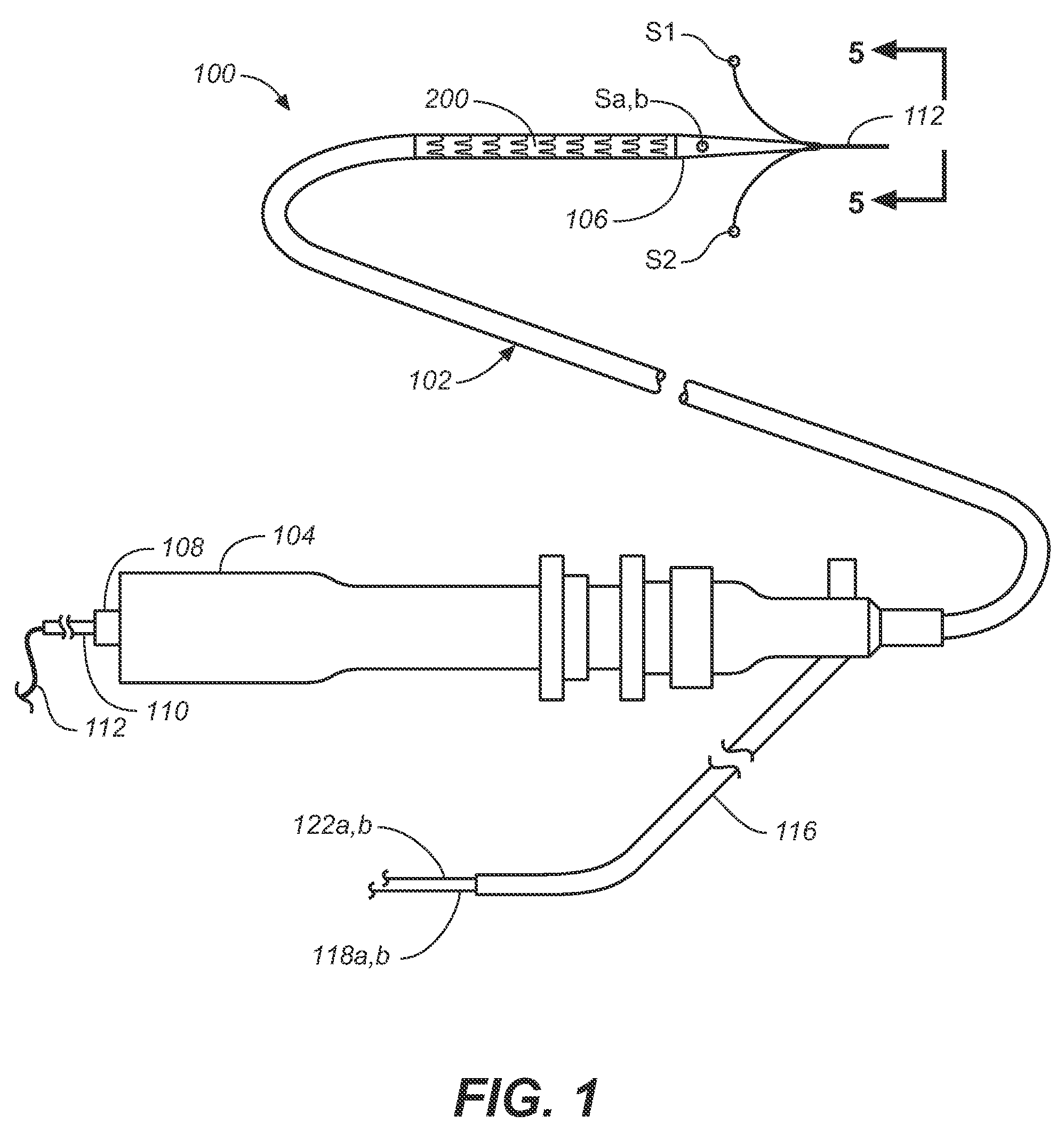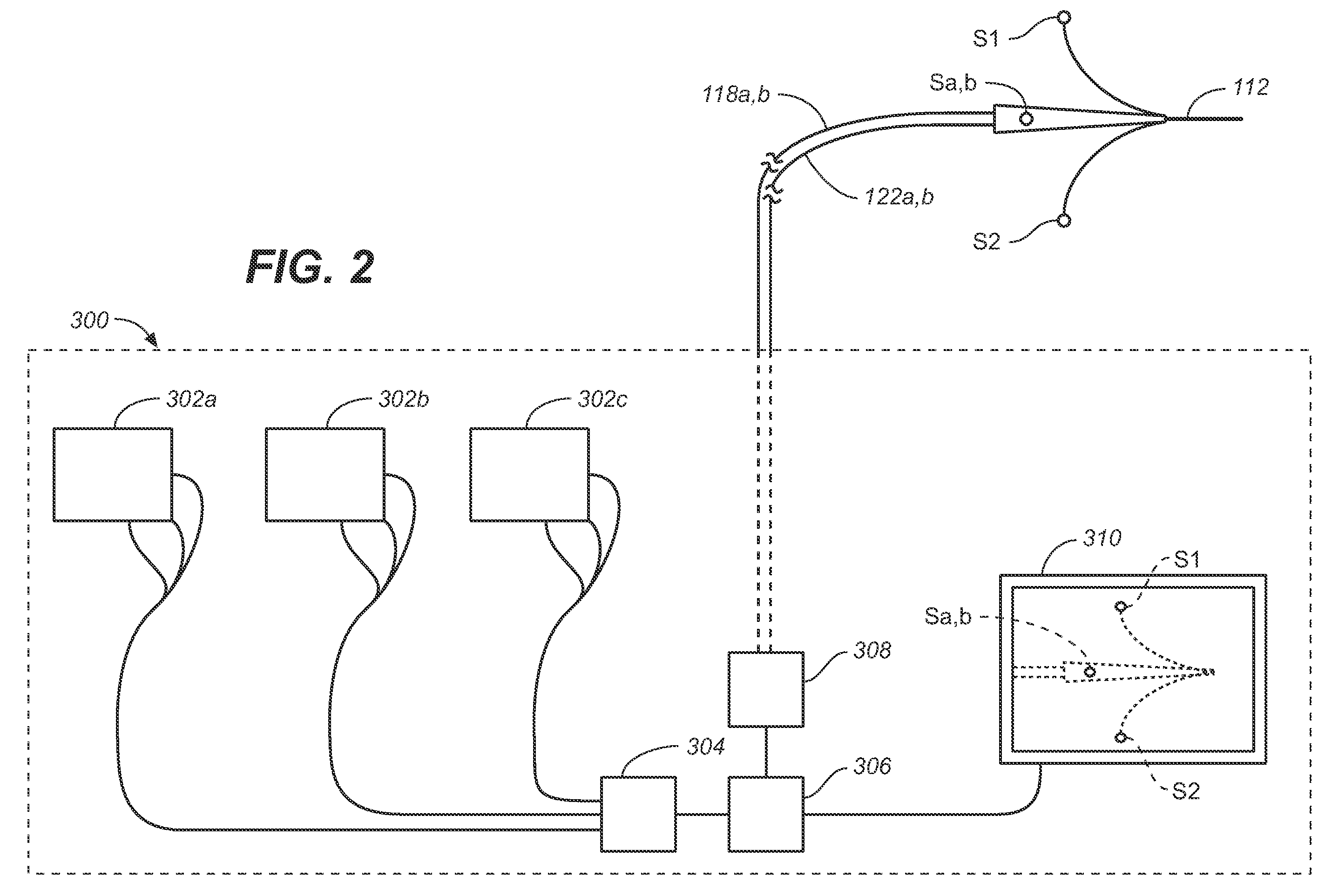Vascular Position Locating Apparatus and Method
a position locating and vascular technology, applied in the direction of prosthesis, blood vessels, catheters, etc., can solve the problems of affecting the dilated blood vessel, and being susceptible to rupture, and increasing the risk of entanglement of these components,
- Summary
- Abstract
- Description
- Claims
- Application Information
AI Technical Summary
Benefits of technology
Problems solved by technology
Method used
Image
Examples
Embodiment Construction
[0034]The following description will be made with reference to the drawings where when referring to the various figures, it should be understood that like numerals or characters indicate like elements.
[0035]Regarding proximal and distal positions, the proximal end of the prosthesis (e.g., stent-graft) is the end closest to the heart (by way of blood flow) whereas the distal end is the end farthest away from the heart during deployment. In contrast, the distal end of the catheter is usually identified as the end that is farthest from the operator, while the proximal end of the catheter is the end nearest the operator. Therefore, the prosthesis (e.g., stent-graft) and delivery system proximal and distal descriptions may be consistent or opposite to one another depending on prosthesis (e.g., stent-graft) location in relation to the catheter delivery path.
[0036]Embodiments according to the invention facilitate mapping of one or more branch lumens in a patient prior to stent-graft deploy...
PUM
 Login to View More
Login to View More Abstract
Description
Claims
Application Information
 Login to View More
Login to View More - R&D
- Intellectual Property
- Life Sciences
- Materials
- Tech Scout
- Unparalleled Data Quality
- Higher Quality Content
- 60% Fewer Hallucinations
Browse by: Latest US Patents, China's latest patents, Technical Efficacy Thesaurus, Application Domain, Technology Topic, Popular Technical Reports.
© 2025 PatSnap. All rights reserved.Legal|Privacy policy|Modern Slavery Act Transparency Statement|Sitemap|About US| Contact US: help@patsnap.com



